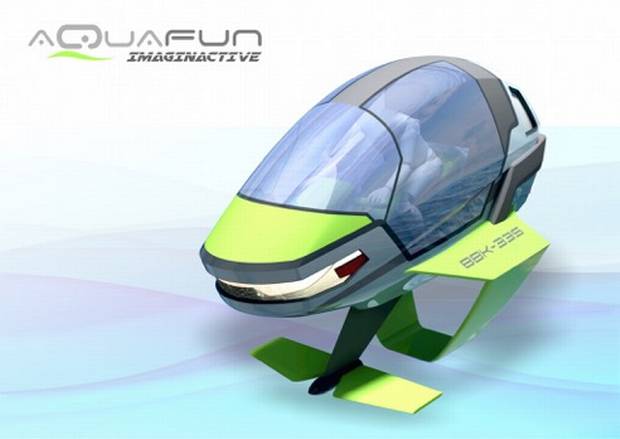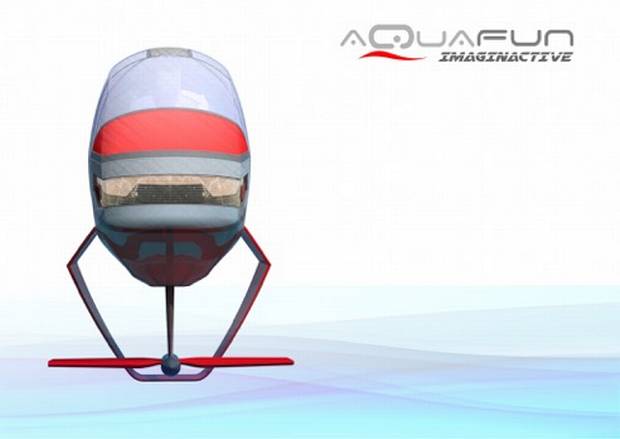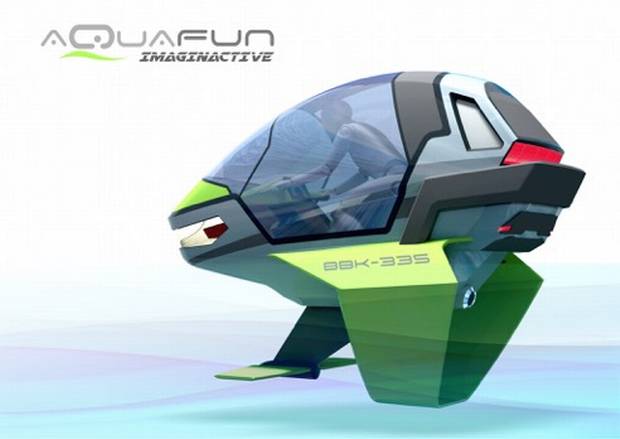The concept
The Aquafun is a personal watercraft [PWC] equipped with a hydrofoil that's designed to be driven during three seasons instead of one. Based on a modified Sea-Doo platform, it would include a transparent canopy to protect riders from cold wind and water.

The strong canopy is designed to protect riders from the elements.
Origin of the idea
Spring is here, and those who love the water are itching to get back on it. I thought it would be fun to ride on lakes or rivers even though there's still a chill in the air. We recently worked on a similar idea, but this time we added a hydrofoil so that the vehicle could go faster to compensate for some of the energy lost to aerodynamics.
The
Aquafun name was introduced by my late uncle, Germain Bombardier, who worked in the 1970s on early versions of PWCs equipped with outboard engines.

Hydrofoil helps the vehicle go faster to make up for energy lost to aerodynamics.
How it works
The Aquafun would work similarly to other PWCs propelled by a jet turbine, except that its cockpit would be designed to incorporate a strong, transparent canopy to protect riders. The hydrofoil system is inspired by the works of Kotaro Horiuchi, a Japanese inventor who conducted extensive studies on PWC with hydrofoils in the 1950s.
There should be enough space inside the cockpit so that the pilot and passenger feel at ease. A helmet and a harness would be worn to prevent you from hitting your head on the side canopy in the event of a mishap.
The engine's heat would be used to warm the riders, and in summer, an air-conditioning system could be installed if the owners wished to keep the cockpit closed. Parts of the canopy could be darkened to reduce sun glare.
Riding on colder bodies of water is more dangerous, so additional features could be developed to reduce risks of hypothermia if a rider inadvertently falls from the PWC. A new line of clothing designed for colder weather could be introduced for extreme riders.
Ideally, the Aquafun would be powered by an electric motor that would take its energy from a fuel cell.

Like other PWCs, the Aquafun would be propelled by a jet turbine.
What it's used for
With the Aquafun, you would be able to ride your PWC year-round in the south, and almost year-round in the north. First responders could use it to carry out rescue missions along dangerous coastlines (one version could be delivered without any hydrofoil). Developing such a machine would push the limits of existing PWCs and open up new possibilities.
The designer
Adolfo Esquivel designed the Aquafun. Esquivel earned an industrial design degree in Colombia and completed a postgraduate study on events design at the Université du Québec à Montréal. He works as a senior industrial designer in Calgary, and also created the design of the Ikaros skydiving glider and the Voyager virtual reality hotel concept.
